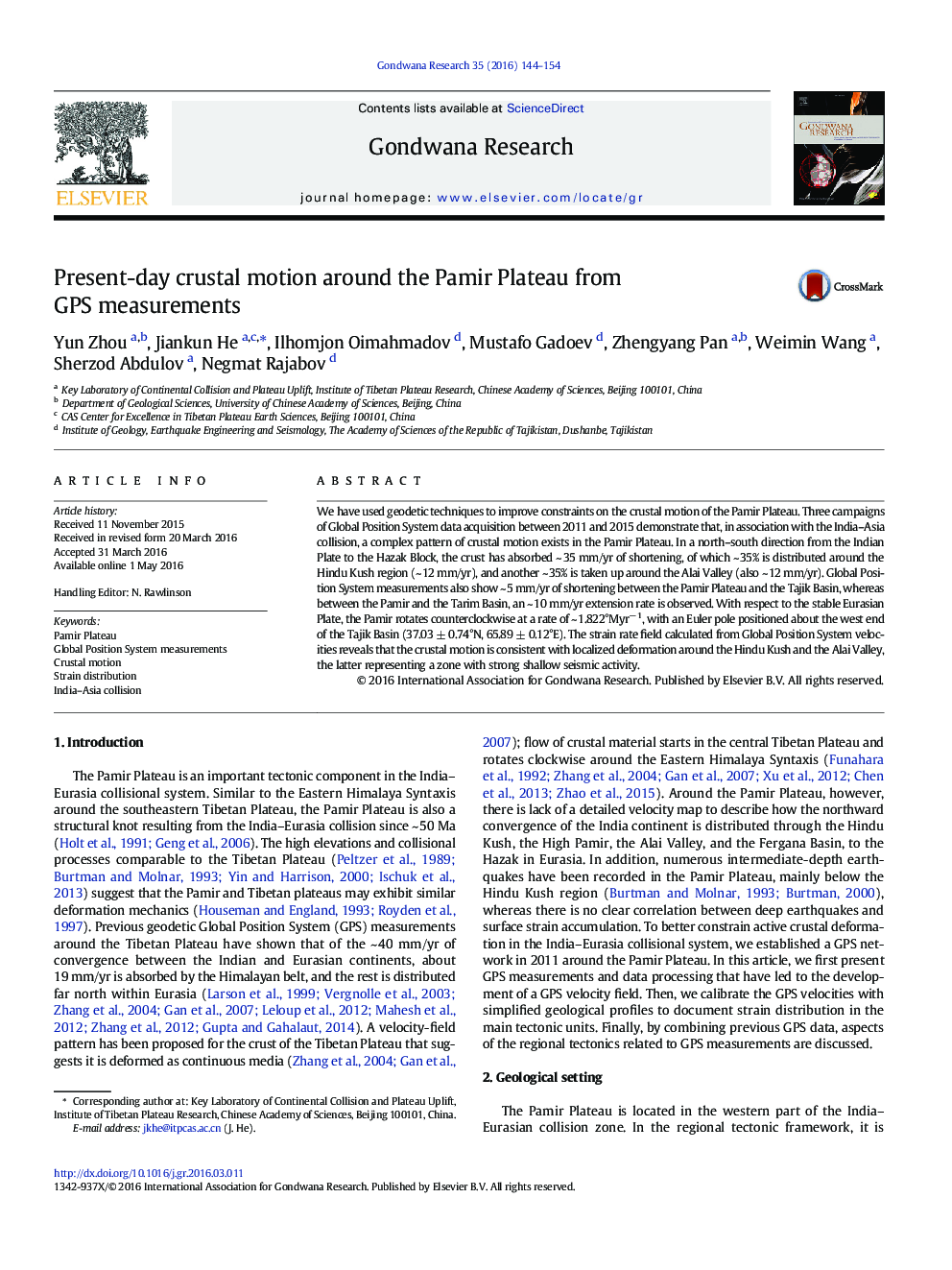| کد مقاله | کد نشریه | سال انتشار | مقاله انگلیسی | نسخه تمام متن |
|---|---|---|---|---|
| 4726593 | 1640136 | 2016 | 11 صفحه PDF | دانلود رایگان |

• Generally clarify the crustal movement of Pamir plateau and surrounding regions.
• Strain rate field is in good agreement with earthquake distribution.
• Provide the Euler vector and rotating rate of Pamir plateau.
We have used geodetic techniques to improve constraints on the crustal motion of the Pamir Plateau. Three campaigns of Global Position System data acquisition between 2011 and 2015 demonstrate that, in association with the India–Asia collision, a complex pattern of crustal motion exists in the Pamir Plateau. In a north–south direction from the Indian Plate to the Hazak Block, the crust has absorbed ~ 35 mm/yr of shortening, of which ~ 35% is distributed around the Hindu Kush region (~ 12 mm/yr), and another ~ 35% is taken up around the Alai Valley (also ~ 12 mm/yr). Global Position System measurements also show ~ 5 mm/yr of shortening between the Pamir Plateau and the Tajik Basin, whereas between the Pamir and the Tarim Basin, an ~ 10 mm/yr extension rate is observed. With respect to the stable Eurasian Plate, the Pamir rotates counterclockwise at a rate of ~ 1.822°Myr− 1, with an Euler pole positioned about the west end of the Tajik Basin (37.03 ± 0.74°N, 65.89 ± 0.12°E). The strain rate field calculated from Global Position System velocities reveals that the crustal motion is consistent with localized deformation around the Hindu Kush and the Alai Valley, the latter representing a zone with strong shallow seismic activity.
Figure optionsDownload as PowerPoint slide
Journal: Gondwana Research - Volume 35, July 2016, Pages 144–154